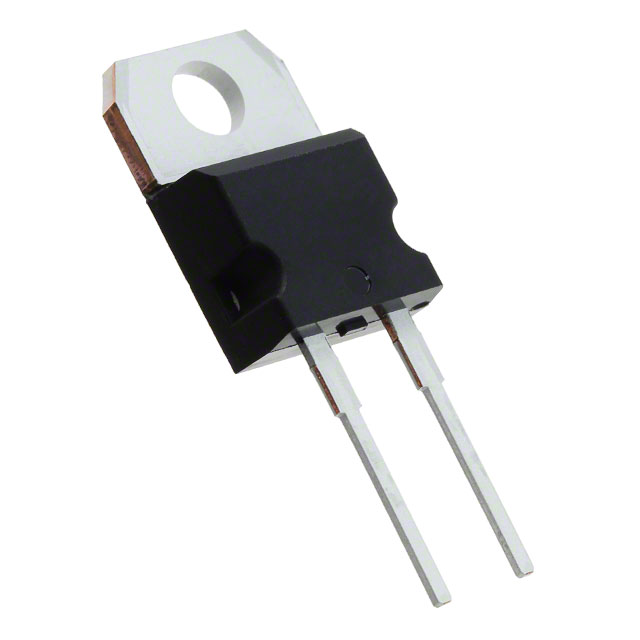Technical Specifications
Parameters and characteristics for this part
| Specification | STPSC10H12DY |
|---|---|
| Capacitance @ Vr, F | 725 pF |
| Current - Average Rectified (Io) | 10 A |
| Current - Reverse Leakage @ Vr | 60 µA |
| Grade | Automotive |
| Mounting Type | Through Hole |
| Operating Temperature - Junction [Max] | 175 ░C |
| Operating Temperature - Junction [Min] | -40 °C |
| Package / Case | TO-220-2 |
| Qualification | AEC-Q101 |
| Reverse Recovery Time (trr) | 0 ns |
| Speed | No Recovery Time |
| Supplier Device Package | TO-220AC |
| Technology | SiC (Silicon Carbide) Schottky |
| Voltage - DC Reverse (Vr) (Max) [Max] | 1.2 kV |
| Voltage - Forward (Vf) (Max) @ If | 1.5 V |
Pricing
Prices provided here are for design reference only. For realtime values and availability, please visit the distributors directly
| Distributor | Package | Quantity | $ | |
|---|---|---|---|---|
| Digikey | Tube | 1 | $ 6.22 | |
| 50 | $ 3.25 | |||
| 100 | $ 3.01 | |||
| 500 | $ 2.52 | |||
| 1000 | $ 2.45 | |||
Description
General part information
STPSC10H065DLF Series
The SiC diode, available in TO-220AC and D²PAK, is an ultrahigh performance power Schottky rectifier. It is manufactured using a silicon carbide substrate. The wide band-gap material allows the design of a low VFSchottky diode structure with a 1200 V rating. Due to the Schottky construction, no recovery is shown at turn-off and ringing patterns are negligible. The minimal capacitive turn-off behavior is independent of temperature. Especially suited for use in PFC and secondary side applications, this ST SiC diode will boost the performance in hard switching conditions. This rectifier will enhance the performance of the targeted application. Its high forward surge capability ensures a good robustness during transient phases.
Documents
Technical documentation and resources



